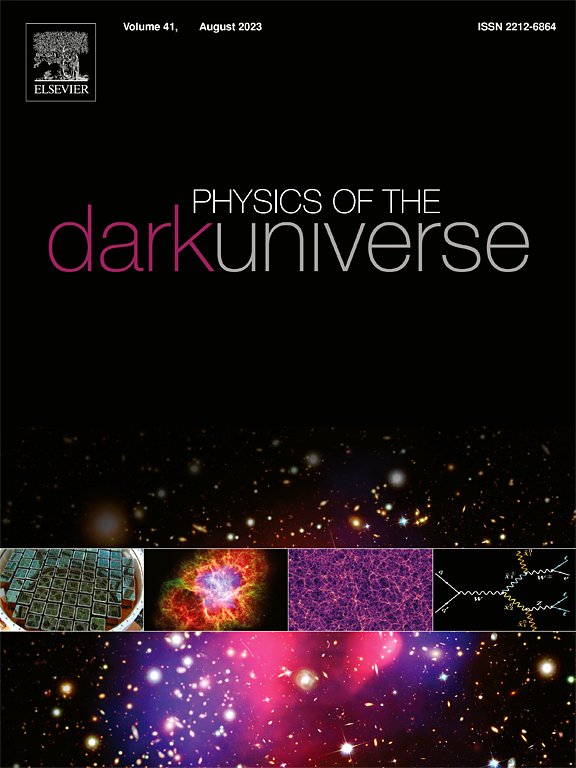超轻黑洞是高能粒子的来源
IF 6.4
2区 物理与天体物理
Q1 ASTRONOMY & ASTROPHYSICS
引用次数: 0
摘要
存储负担效应,即系统内存储的信息量有助于其稳定性的观点,与具有大信息存储容量的系统(如黑洞)特别相关。在这些物体中,最迟在大约一半的初始质量被辐射掉之后,蒸发过程就停止了。因此,质量mPBH > 1015g的轻原始黑洞(PBHs),传统上被认为到现在已经完全蒸发,可能会幸存下来,并构成可行的暗物质候选者。这些pbh的持续合并将产生“年轻”黑洞,这些黑洞恢复蒸发,释放出目前实验可能检测到的超高能粒子。由此产生的发射光谱在所有标准模型粒子中都是热的,提供了一个清晰而独特的特征。我们证明,如果记忆负担效应在pbh失去大约一半的初始质量后激活,那么目前地球上的中微子通量测量对这些mPBH > 109g的暗物质候选者有很强的限制。这表明记忆负担一定是在蒸发的早期阶段开始的。与现有的边界不同,我们的结果仅依赖于残余的质量,而不依赖于稳定相的模型相关细节。我们还讨论了通过观测伽马射线、宇宙射线和引力波来完善这些约束的可能性。本文章由计算机程序翻译,如有差异,请以英文原文为准。
Ultralight black holes as sources of high-energy particles
The memory burden effect, the idea that the amount of information stored within a system contributes to its stabilization, is particularly relevant for systems with a large information storage capacity, such as black holes. In these objects, the evaporation process halts, at the latest, once approximately half of the initial mass has been radiated away. As a result, light primordial black holes (PBHs) with mass , which are traditionally assumed to have fully evaporated by the present time, may instead survive and constitute viable dark matter candidates. Ongoing mergers of such PBHs would give rise to “young” black holes that resume their evaporation, emitting ultrahigh-energy particles potentially detectable by current experiments. The resulting emission spectrum would be thermal across all Standard Model particle species, offering a clear and distinctive signature. We demonstrate that, if the memory burden effect activates after PBHs have lost around half of their initial mass, current measurements of the neutrino flux at Earth place strong constraints on such dark matter candidates for . This suggests that the memory burden must set in at earlier stages of evaporation. Unlike existing bounds, our results depend solely on the mass of the remnant, and not on model-dependent details of the stabilized phase. We also discuss the potential for refining these constraints through observations of gamma rays, cosmic rays, and gravitational waves.
求助全文
通过发布文献求助,成功后即可免费获取论文全文。
去求助
来源期刊

Physics of the Dark Universe
ASTRONOMY & ASTROPHYSICS-
CiteScore
9.60
自引率
7.30%
发文量
118
审稿时长
61 days
期刊介绍:
Physics of the Dark Universe is an innovative online-only journal that offers rapid publication of peer-reviewed, original research articles considered of high scientific impact.
The journal is focused on the understanding of Dark Matter, Dark Energy, Early Universe, gravitational waves and neutrinos, covering all theoretical, experimental and phenomenological aspects.
 求助内容:
求助内容: 应助结果提醒方式:
应助结果提醒方式:


